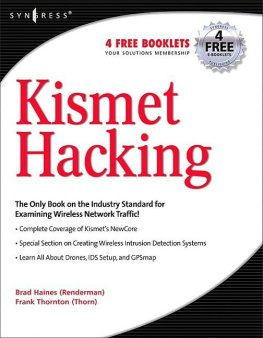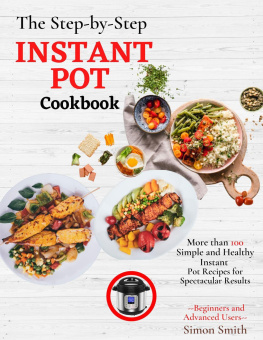The "sous vide" part of sous vide cooking refers to the vacuum-sealed bags that are often called for when you're using the technique. (The French phrase literally means "under vacuum.") However, these days, when someone says "sous vide cooking," they're generally referring to any kind of cooking that takes place in a precisely temperature-controlled water bath, whether you're actually using a vacuum-sealed bag or not.
Sous vide cooking offers unparalleled control over whatever it is you are trying to cook, whether it's steaks and chops, shrimp and lobster, vegetables, or even large cuts of meat like pork shoulders and legs of lamb. With fast-cooking foods, like steaks and chicken breasts, sous vide removes all the guesswork involved in traditional methods. No poking with a thermometer, no cutting and peeking, no jabbing with your fingerjust perfect results every single time.
For meat like pork shoulder and ribs, which are far more forgiving of accidental overcooking and require less precise temperatures, sous vide has some less obvious benefits. But in any event, sous vide increases the flexibility of your schedule, allowing you to go about your day (or two days, as the case may be) with the circulator quietly heating away in the corner of the kitchen, slowly tenderizing a tough cut of meat, or holding your steak at a perfect medium-rare until it's ready to be finished and served.
Sous vide can also allow you to get results and textures that are impossible to achieve using traditional cooking methods. Your steaks will come out of the bath cooked to your preferred temperature from edge to edge. For pork shoulder, sous vide cooking allows us to cook at temperatures that are significantly lower and more stable than those used in traditional methods, which means that we can achieve tender results with relatively little moisture loss. (You can even cook a chicken breast so that it's rare or medium-rare and is entirely pasteurized and thus perfectly safe to eat, although I don't recommend it.)
TIPS AND TRICKS
Over the course of several years and many, many tests, I've hit upon a couple cool tricks and tips to address problems that sometimes come up when you're cooking sous vide. Here are three that I've found to be the most useful.
No Vacuum Sealer? Use Water Displacement to Seal Your Food in Zipper-Top Bags
Having an easy way to remove air from plastic bags can be handy for all sorts of applications, from marinating meat more effectively to preventing freezer burn and, of course, cooking things sous vide.
Vacuum sealers are designed to do this, but good ones can be prohibitively expensive, and there's a quick, easy, inexpensive option, called the water displacement method, that requires nothing more than a zipper-lock freezer bag and a tub or pot of water.
To do it, start by placing your food inside a zipper-lock bag, then seal the bag, leaving just the last inch or so of the seal open. Next, lower the bag into a pot or tub of water. As the bag gets lowered, water pressure will push air out of the bag through the small opening you've left. Just before the bag is completely submerged, seal off that opening and pull the whole bag out of the tub.
Keep Your Sous Vide Bag Submerged With a Binder Clip
One of the most common sous vide difficulties that I get emails about is floating bags. A few things can cause a bag to float. The first is an imperfect seal, meaning the air is trapped in there to begin with. (This is especially likely to happen if you are using the water displacement method.) With high temperatures or prolonged cooks, vapor can also form inside the bag as water is heated and evaporates, or as air bubbles trapped inside meat or vegetables escape. Bags can also float if the food you're cooking is less dense than water (think sous vide bacon with extra-fatty pieces).
With sous vide cooking, it's absolutely vital that your bags stay submerged and that trapped air bubbles are pushed to the top of the bag and away from the food. This is the only way to guarantee that your food is heating properly, which is important for both food safety and quality.
So how do you get a persistently floating bag to sink? All you've got to do is clamp a large binder clip (like these ACCO clips) on the bottom of the bag, then slip a heavy spoon into the mouth of the clip. The head of the spoon will keep it from falling out, and the weight should keep your food submerged. For especially stubborn bags, you can add a few spoons.
Add Ping-Pong Balls to Your Sous Vide Water Bath
If you cook something sous vide for a long period of time, the water in the bath container can dip to such a low level that your circulator will shut off completely. This not only interrupts the cook time but can pose a serious risk to food safety. To prevent evaporation, you can cover your water bath with plastic wrap or aluminum foil, or cut a sous-vide-device-shaped hole out of an appropriately fitting lid, but I've found that the easiest solution is to dump a bunch of Ping-Pong balls in the bath.
By floating a layer of Ping-Pong balls on the water's surface, you'll simultaneously insulate your bath and help steam to condense and drip back down. The great thing is that Ping-Pong balls will conform to the shape of whatever container you're using and allow you to easily drop bags in and lift them from the bath mid-cook. They're also completely reusable. I keep about 50 of them stored with the rest of my sous vide kit.
FREQUENTLY ASKED SOUS VIDE QUESTIONS
Q: What are the downsides to cooking sous vide?
None! Just kidding. Sous videstyle precision cooking is a technique, another tool in your arsenal, and, as with all techniques, there's a tradeoff. Here are a few of the most immediate:
It takes longer. For instance, a traditionally cooked steak goes from fridge to plate in 15 to 20 minutes (a bit longer if you have to preheat your oven); a sous vide steak will take an hour or more. A barbecue pork shoulder on an outdoor smoker or in the oven can take six to eight hours; with sous vide, it can take over a day. However, with sous vide cooking, this time is almost 100% hands-off.
You will not achieve the exact same sear. Flag-waving sous vide zealots may claim otherwise, but the rapid sear you can achieve after cooking sous vide will not be as thick or crusty as the sear you get from a traditional cooking method. Some folks prefer a thicker sear, while others prefer the thin sear achieved after sous vide cooking.
It often requires more equipment. Cooking sous vide requires a precision cooker and a plastic bag or vacuum sealer, in addition to all the tools required for more traditional methods. Chances are, if you're reading this article, you already have those extra tools.












